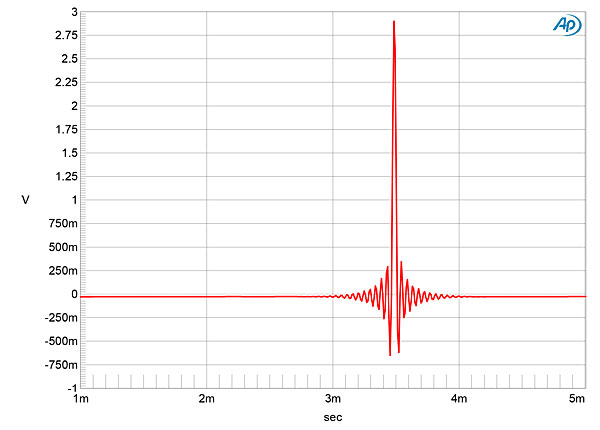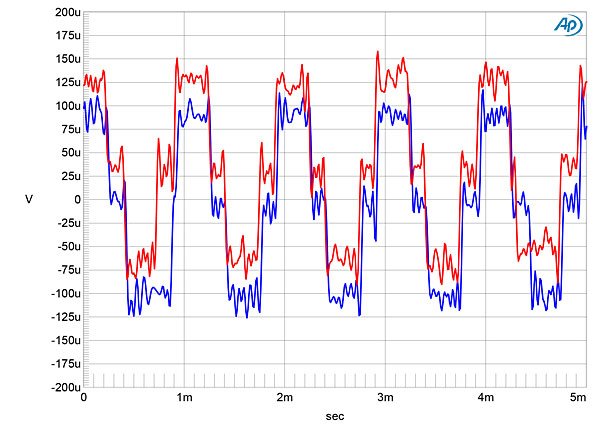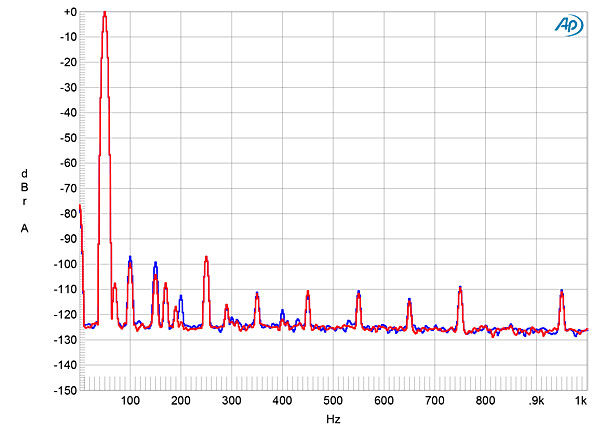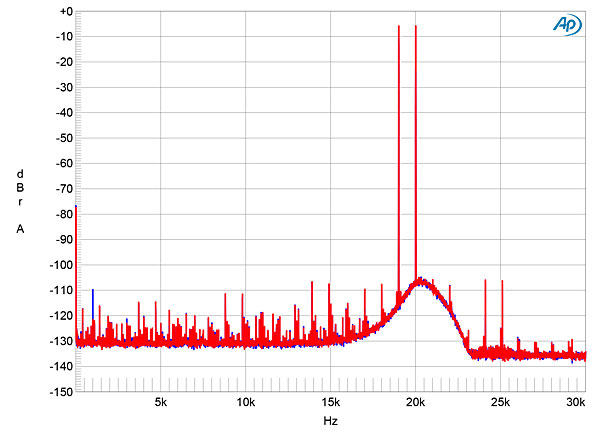| Columns Retired Columns & Blogs |
Nice review. I'm in my first month of ownership of a Marantz SA8005 and I love it. I sincerely hope that the forecasted death of the CD does not come to pass.
Like the Naim CD5 XS, which Art Dudley reviewed in the November 2017 issue, the Rega Apollo has no digital inputs of any kind. That limited my measurement of its technical behavior to using 16-bit test files burned to a CD-R. I tested the Rega with my Audio Precision SYS2722 system (see the January 2008 As We See It").
The Rega's error correction was good—no interruptions were apparent in the player's output until the single gaps in the data spiral on the Pierre Verany Digital Test CD reached 1.5mm in length, when there were occasional glitches. (The Compact Disc standard, the so-called "Red Book," requires that a player cope with gaps of up to 0.2mm.) The maximum output level from the Apollo's unbalanced output was 2.18V, which is 0.8dB higher than the CD standard's 2V, and the output preserved absolute polarity (ie, was non-inverting). The output impedance was 600 ohms at 20 and 1kHz, rising slightly to 660 ohms at 20Hz, presumably due to the presence of a series capacitor in the signal path.
Fig.1 shows the Apollo's impulse response: It's typical of a linear-phase reconstruction filter, with symmetrical ringing either side of the single sample at 0dBFS. Tested with white noise sampled at 44.1kHz, the Rega's output rolled off quickly above 20kHz (fig.2, red and magenta traces), but hadn't reached full attenuation by the Nyquist frequency, 22.05kHz (fig.2, vertical green line). However, the aliased image at 25kHz of a full-scale 19.1kHz tone (blue and cyan traces) is suppressed by 100dB. The distortion harmonics of that tone are visible at 38.2 and 57.3kHz, at a respective –92dBFS (0.0025%) and –104dBFS (0.0006%). The blue and red traces in fig.3 show the Apollo's audioband response taken with spot tones; it is flat to 15kHz, and reveals excellent channel matching. The cyan and magenta traces in fig.3 show the response with preemphasized data: the output peaks by almost 1.5dB between 5 and 15kHz, which will make the sound a touch bright. Fortunately, pre-emphasized CDs are very rare these days.



Channel separation (not shown) was superb, at >100dB in both directions below 1kHz, but decreasing to 72dB at 20kHz. The analog noise floor was low in level, with no power-supply–related artifacts present. With dithered data representing a 1kHz tone at –90dBFS (fig.4), the graph actually shows the spectrum of the dither noise used to encode the 16-bit test signal. With undithered data representing a 1kHz tone at exactly –90.31dBFS, the three DC voltage levels described by the data are well defined, but with a very slight DC offset present in the right channel (fig.5).


The spectrum of a full-scale 50Hz tone into 600 ohms (fig.6) indicates that, even into this demanding impedance, the Apollo's distortion harmonics all lie at or below –99dB (0.001%). I then tested the Rega for intermodulation distortion with an equal mix of 19 and 20kHz tones. The resultant spectrum (fig.7) looks a little hashy in the audioband, but this is an artifact of the 16-bit encoding. Actual intermodulation products are very low in level even into 600 ohms, the second-order difference product at 1kHz lying close to –110dB (0.0003%). However, fig.7 shows an odd rise in the noise floor at the top of the audioband; this can also be just made out in fig.2.


Finally, when I tested the Rega Apollo with 16-bit J-Test data (fig.8), the spectral spike that represents the high-level tone at exactly one-quarter the sample rate is well defined, and most of the odd-order harmonics of the LSB-level, low-frequency squarewave are close to the correct levels (sloping green line). However, the harmonics closest to the 11.025kHz are too high in level, suggesting that the Apollo's rejection of word-clock jitter is not quite to the otherwise excellent standard of digital engineering revealed by the rest of its measured performance.—John Atkinson


Nice review. I'm in my first month of ownership of a Marantz SA8005 and I love it. I sincerely hope that the forecasted death of the CD does not come to pass.

... "three tiny, spring-loaded metal balls" appears identical to the sort of mechanism found in a $20 portable CD player.
If you like the performance of the Wolfson WM8742 DAC, then you ought to try the Onkyo C-7070 CD player, which uses a pair of them - and costs only $800:
https://www.onkyousa.com/Products/model.php?m=C-7070&class=Compact%20Disc&source=prodClass

it depends.ten years ago i bought the third nagra cdc ever made,actual list €16500.lately i began to suspect that the cdpro drive stuttered on some cdrs.i sent it back to nagra where,after three weeks it came back with a brand new drive,a software upgrade and the old drive which had proved blameless on examination.price including shipping was well less than a tenth of list.draw your conclusions
michele,from rome